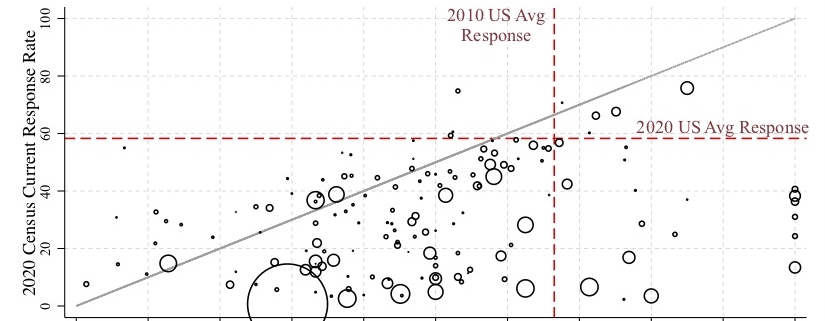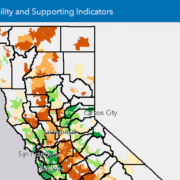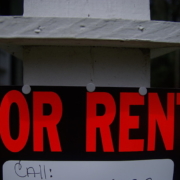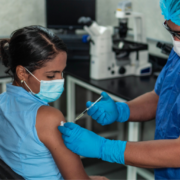US Census Response Rates on American Indian Reservations in the 2020 Census and in the 2010 Census
New research by CNK Director, Paul Ong, with Professors Randall Akee and Desi Rodriguez-Lonebear examine the American Indian tribal reservation 2020 Census self-response data and compare it to the 2010 self-response rate. They show that:
- Only seven tribal reservations have response rates greater than the current national average of 60% response (they
are above the red horizontal line). - In 2010, only 23 tribal reservations were above the national average response rate of 67% (to the left of the red
vertical line). - 50 tribal reservations have a higher response rate in their current 2020 response rate than their 2010 final response
(above the 45-degree line). - 118 tribal reservations have 2020 responses that are lower than their 2010 response rate (below the 45-degree line).
The low self-response rate during the first phase of the 2020 Census will create major challenges for the second phase, the non-response follow-up in-person interviews. Low self-response means many more labor-intensive contacts will be needed, which is particularly difficult during the pandemic. Ultimately, this may produce a significant undercount of American Indians.
Full data by tribal reservation posted online at: https://www.aisc.ucla.edu/news/akee_census2020.aspx
For further information contact: Randall Akee at rakee@ucla.edu







 https://www.flickr.com/photos/29456235@N04/
https://www.flickr.com/photos/29456235@N04/ 



Leave a Reply
Want to join the discussion?Feel free to contribute!